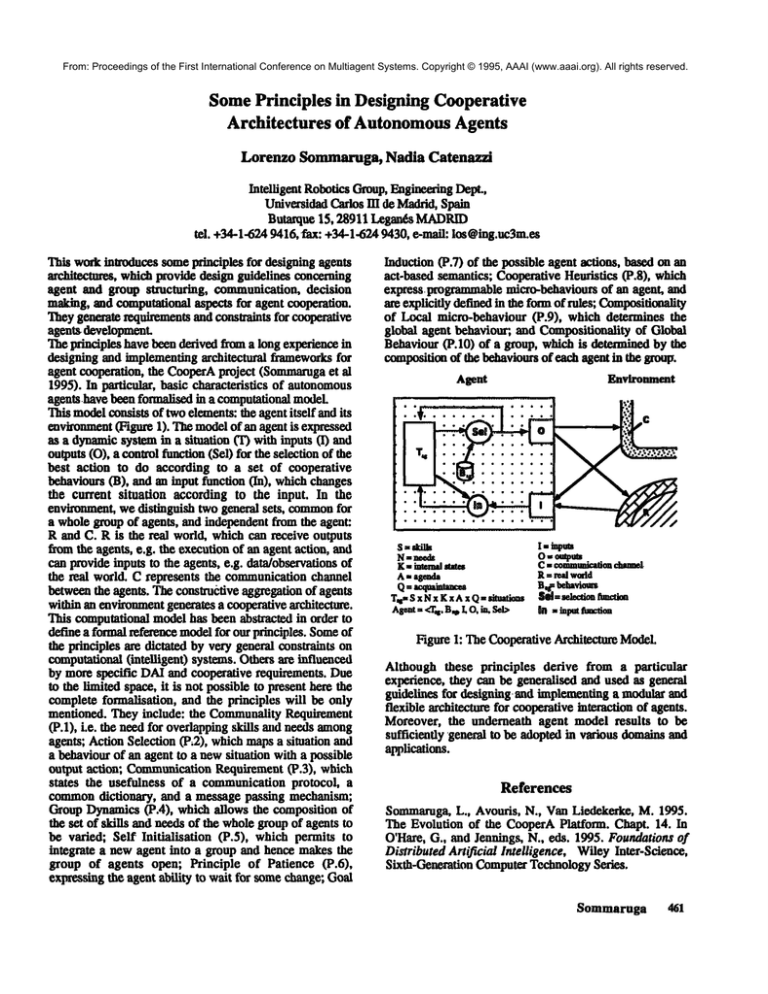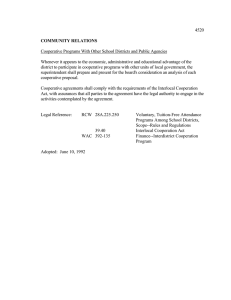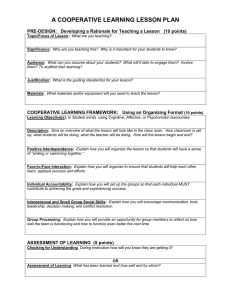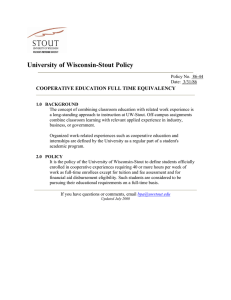
From: Proceedings of the First International Conference on Multiagent Systems. Copyright © 1995, AAAI (www.aaai.org). All rights reserved.
SomePrinciples in Designing Cooperative
Architectures of AutonomousAgents
Lorenzo
Sommaruga,
Nadia Catenazzi
Intelligent Robotics Group, Engineering Dept.,
Universidad Carlos HI de Mn_d_dd.Spain
Butantne 15, 28911Legan~ MADRID
tel. +34-1-6249416, fax: +34-1-6249430, e-mail: lcs@ing.uc3m.es
This work introduces someprinciples for designing agents
architectures, which provide design guidelines concerning
agent and group structuring, communication, decision
making, and computational aspects for agent cooperation.
They generate requirements and constraints for cooperative
agent~ develupment.
The principles have been derived fr~n a long experience in
designing and implementing architectural frameworks for
agent cooperation, the Coope~Aproject (Sommarugaet al
1995). In particular, basic characteristics of autonomous
agents have been formnli.q~d in a computational model
This modelconsists of twoelements: the agent itself and its
environment(Figure 1). The modelof an agent is expressed
as a dynamicsystem in a flotation (T) with inputs (I)
outputs (O), a conlrol function (Sel) for the selection of
best action to do according to a set of cooperative
behavionrs (B), and an input function (In), which changes
the current situation according to the input. In the
environment, we distinguish two general sets, commonfor
a whole group of agents, and independent from the agent:
R and C. R is the real world, which can receive outputs
from the agents, e.g. the execution of an agent action, and
can provide inputs to the agents, e.g. data/observations of
the real world. C represents the communication channel
between the agents. The conswJctive aggregation of agents
within an environmentgenerates a cooperative architectm’e.
This computational modelhas been abstracted in order to
define a formal roferenee modelfor our principles. Someof
the principles are dictated by very general constraints on
computational (intelligent) systems. Others are influenced
by more specific DAIand cooperative requi.,-ements. Due
to the limited space, it is not possible to present here the
complete formalization, and the principles will he only
mentioned. They include: the CommunalityRequirement
(P.1), i.e. the need for overlapping skills mid needs among
agents; Action Selection (P,2), which mapsa situation and
a bchaviour of an agent to a newsituation with a possible
output action; CommunicationRequirement (P.3), which
states the usefulness of a communication protocol, a
commondictionary, and a message passing mechanism;
Group Dynamics (PA), which allows the composition
the set of skills and needs of the wholegroup of agents to
be varied; Self Initialisation
(P.5), which permits
integrate a new agent into a group and hence makes the
group of agents open; Principle of Patience (P.6),
expressing the agent ability to wait for somechange; Goal
Induction (P.7) of the possible agent actions, based on
act-based semantics; Cooperative Heuristics (P.8), which
express programmablemicro-bchavionrs of an agent, and
are explicitly defined in the form of rules; Compositionallty
of Local micro-bchavionr (P.9), which determines the
global agent behaviour; and Compositionality of Global
Behaviour (P.10) of a group, which is determined by the
compositionof the behaviours of each agent in the group.
Envtromneat
Agent
I= mpum
S = skiUs
Of owputJ
N=aeeds
C = commmic~c~d~m~l.
K = ~emal m~
R = re~ world
A=ageada
B~ be~vio~
Q = ~iaum~
T.s=S x Nx Kx Ax Q= situatimm
As~t
=~’T~s,
B~LO,in,
Sel> |n = input ft~fi~
Figure 1: The Cooperative Architecture Model.
Although these principles derive from a particular
experience,they can be generalised and used as general
guidelines for designing and implementing a modula~and
flexible architecture for cooperative interaction of agents.
Moreover, the underneath agent model results to be
sufficiently general to be adopted in various domainsand
applications.
References
Sommaruga,L., Avouris, N., Van Liedekerke, M. 1995.
The Evolution of the CooperA Platform. Chapt. 14. In
O’Hare, G., and Jennings, N., eds. 1995. Foundations of
Distributed Artificial lmelli&ence, Wiley Inter-Science,
Sixth-Generation ComputerTechnologySeries.
Sommaruga
461







